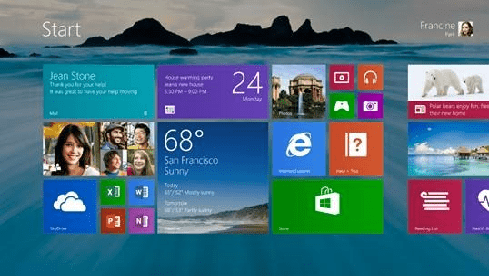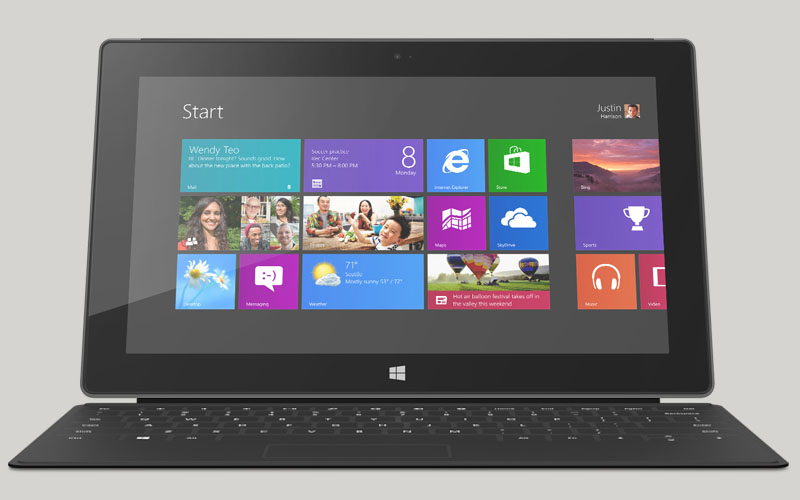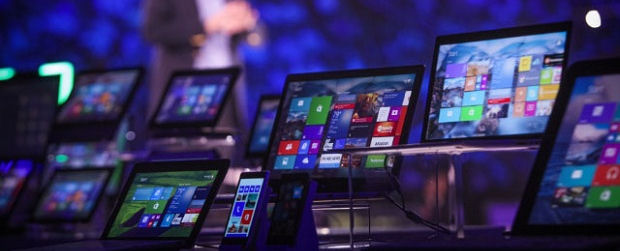Microsoft Corp. is putting the troubled Windows 8 era behind it with new operating system that will likely be more business-focused but will still retain the touch functions of its predecessor.
At an event aimed at business customers, Satya Nadella, CEO of Microsoft briefly took the wraps of its next flagship OS which will be called Windows 10, skipping version 9 to underscore the company’s leap towards an operating system directed towards Internet services and mobile devices.
“Windows 10 represents the first step of a whole new generation of Windows, unlocking new experiences to give customers new ways to work, play and connect,” Terry Myerson, executive vice-president of the operating systems group at Microsoft, said. “This will be our most comprehensive operating systems and the best release Microsoft has ever done for our business customers, and we look forward to working together with out broader Windows community to bring Windows 10 to life in the months ahead.”
Windows 10 was codenamed by Microsoft (NASDAQ: MSFT) as Threshold and many reporting on its expected release had taken to calling the OS Windows 9.
The replacement to the much criticized Windows 8 will not be released until 2015. However, Microsoft is making the new OS available on Wednesday for technical preview to a select number of users.
Some of the new features in Windows 10 include:
- Expanded Start menu. The familiar Start menu is back, providing quick one-click access to the functions and files that people use most, and it includes a new space to personalize with favorite apps, programs, people and Web site
- Apps that run in a window. Apps from the Windows Store now open in the same format that desktop programs do. They can be resized and moved around, and have title bars at the top allowing users to maximize, minimize and close with a click
- Snap enhancements. Working in multiple apps at once is easier and more intuitive with snap improvements. A new quadrant layout allows up to four apps to be snapped on the same screen. Windows will also show other apps and programs running for additional snapping, and it will even make smart suggestions on filling available screen space with other open apps
- New Task view button. The new Task view button on the task bar enables one view for all open apps and files, allowing for quick switching and one-touch access to any desktop created
- Multiple desktops. Instead of too many apps and files overlapping on a single desktop, it’s easy to create and switch between distinct desktops for different purposes and projects — whether for work or personal use
The touch-optimized user interface of Windows 8 failed to win over Microsoft’s enterprise market. Windows 7 was a hit with CIOs and their employees and many of them accustomed to interface and features of Windows 7 were disappointed and confused with Windows 8’s UI.
According to analyst firm IDC, Microsoft sold no less than 117.2 million copies of Windows 8 in the consumer market by the end of 2013, but still lagged behind the 322 million copies Windows 7 sold.
Al Gillen, analyst for IDC said in an interview with online technology publication PCWorld.com that Microsoft needs to make sure that Windows 9 “is good for that very important enterprise segment.”
Of the 715 million copies of Windows installed in businesses around the world in 2013, about 361.2 million were Windows 7, 224 million were Windows XP about 40 million were Windows Vista and only 16 million were Windows 8, according to IDC.
With Windows 8, Microsoft took a different approach from that taken by apple which offered users iOS for mobile devices and MacOS for its laptops and desktops.
Windows 8 was designed as an OS that could both be used on touchscreen and on devices using mice and keyboards, but Microsoft couldn’t seem to get the UI right. Even the upgrades in Windows 8.1 never caught on.
Windows 10 will come with the “familiarity of Windows 7” and some benefits found in Windows 8, said Joe Belfore, a Microsoft executive, in a report from the Associated Press.
The new OS will be a step back from the design changes introduced two years ago in Windows 8 but will still endeavour to bridge the gap between PCs and mobile devices.
Windows 10 will still have touch screen functions and will work across a variety of devices like desktops, laptops, tablets, computers and even game consoles, said Myerson.
Windows 10 will unify the underlying systems found in Windows 8, Windows Phone 8 and the Xbox but UIs for the devices will still have a different look. This approach will make it easier for software and create apps that will work on different screen sizes and devices.
Businesses will also have the flexibility to choose how quickly they adopt the latest innovations and influence continued improvements. For example, organizations will be able to customize an app store specific to their needs and environment. The intent is an app store that will allow for volume app licensing, flexible distribution, and the ability for organizations to reclaim or reuse licenses when necessary.
Microsoft also said it has bolstered the new OS’s ability to resist breaches.
Windows 10 will help cut down data loss with the use of containers and data separation mechanisms at the application and file level to provide protection “that follows the data” as it travels from a tablet of PC to a USB drive, email or the cloud.
.






The 6 most exciting features of WIndows 10 🙂
http://www.styzic.com/microsoft-windows-10-new-features/975/